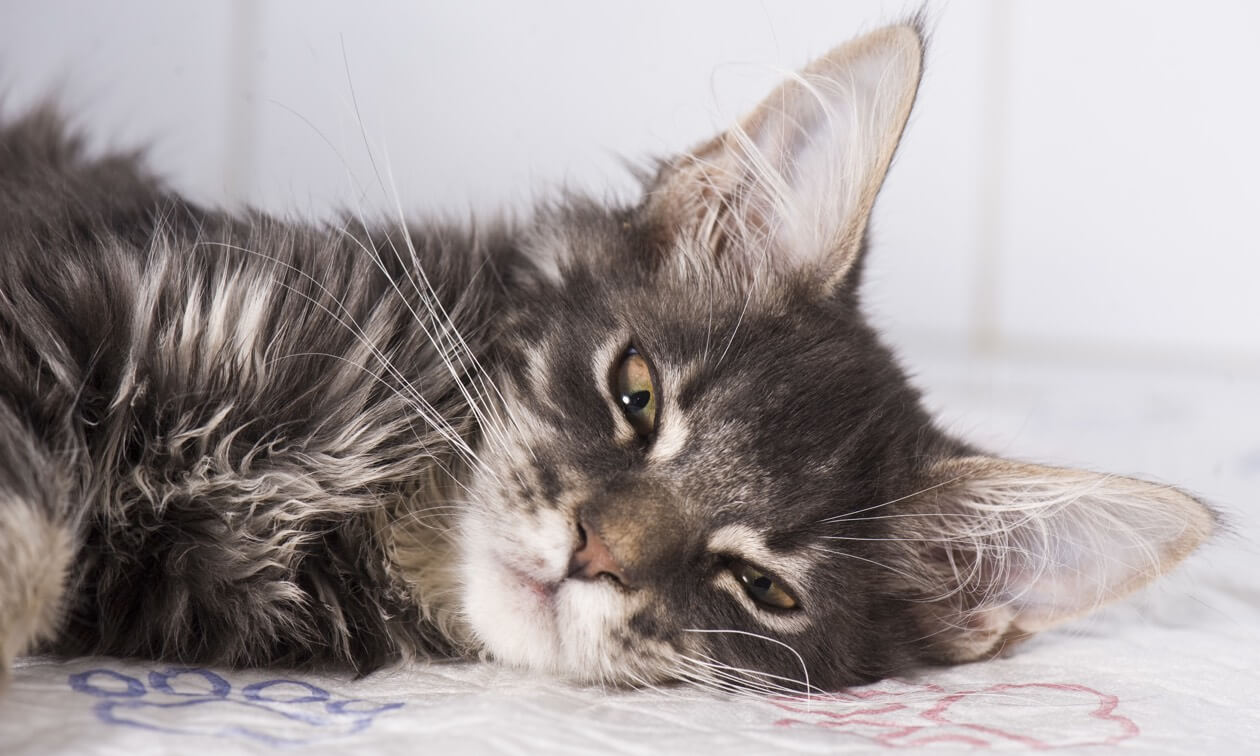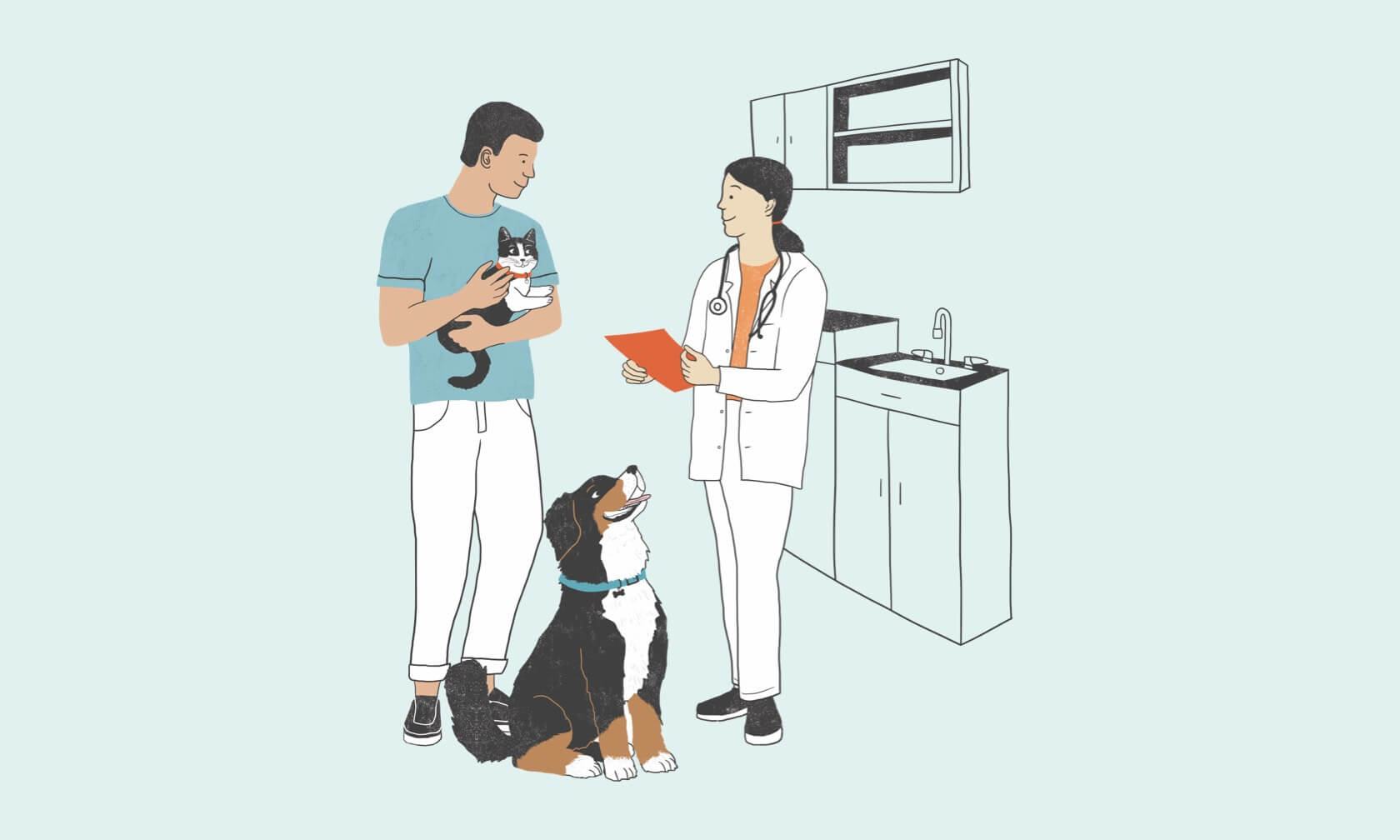While an occasional hairball can be expected, it’s not normal for a cat to throw up regularly. Vomiting in cats is a problem for two reasons. First, vomiting can be a sign of a serious medical problem. Second, and just as important, vomiting is painful, stressful, and can cause your cat to become anxious or just not feel well. It’s important to figure out and try to resolve the underlying reason your cat is throwing up as quickly as possible.

There are two categories of vomiting in cats — acute and chronic. Acute vomiting in cats comes on suddenly, is short in duration, and may resolve on its own. If the underlying cause doesn’t resolve or isn’t removed or treated, acute vomiting may become progressively worse and even become chronic if left untreated. Chronic vomiting happens occasionally or regularly for a week or more.
Common Reasons for Vomiting in Cats
Chronic or acute vomiting in cats can be caused by various reasons. Keep an eye on your cat to know if they've eaten something that they shouldn't or feel stressed by certain events or changes.
Stress
Stressful events that can cause vomiting include, but are not limited to, moving, the holidays, a new pet or baby coming into the home, and home renovations.
Something They’ve Eaten
Hairballs are a common reason cats vomit, but so is ingesting a foreign body (string/rubber band/thread or toys/plastic), toxins (antifreeze, lead, lilies, sago palm, etc.), or a food they’re allergic to (usually this is their protein source). Certain medications can also cause your cat to vomit.
Infection
Some common infections that can cause cats to vomit include gastrointestinal (GI) worms, a bacterial infection in the stomach, FeLV (feline leukemia virus), FIV (feline immunodeficiency virus), FIP (feline infectious peritonitis), or Panleukopenia (“feline distemper”). Even heartworm disease can cause your cat to vomit.
Other Problems Within the Gastrointestinal (GI) Tract
This can include stomach ulcers, IBD (inflammatory bowel disease), or neoplasia (an abnormal growth of tissue).
Diseases Elsewhere in the Body
This can include kidney disease, liver disease, heartworm disease, pancreatitis, hyperthyroidism, and more.
What You Can Do at Home to Help Your Cat’s Vomiting
The best advice is to always call your veterinarian or local veterinary emergency hospital (ER) to confirm if it is okay to wait or if your cat should be seen immediately. If your otherwise healthy cat (one without chronic diseases such as diabetes or chronic kidney disease) vomits once or twice in a 24-hour period but seems fine (peeing normally, normal energy and bowel movements, eating normally, and acting normally), your veterinarian may recommend withholding food and observing your cat for a day.
Cats with pre-existing conditions, who are vomiting and not eating, who have diarrhea, decreased energy, who are hiding, or who may have eaten something harmful should be seen by their veterinarian immediately (sooner than 24 hours).
If your cat has thrown up more than two times in 24 hours, your veterinarian may want to see your cat as soon as possible, since prolonged vomiting can lead to dehydration and electrolyte and acid/base imbalances, which can make the prognosis worse.
What Your Veterinarian Can Do for Your Cat’s Vomiting
When you take your cat to the vet for their acute vomiting, your vet will take a thorough medical history and do a physical exam. This includes assessing your cat for dehydration and other issues that may have come on from throwing up. Next, they will likely recommend additional testing, such as analysis of a stool sample, blood testing, urine testing, X-rays, or an abdominal ultrasound exam to determine the cause of vomiting. Your vet can administer or prescribe anti-vomiting medication, treat the underlying cause, and correct any dehydration or other problems that have occurred, based on your cat's history, physical examination, and test results.
What Can You Do to Decrease the Chance That Your Cat Develops Vomiting?
The good news is that a number of conditions that cause vomiting can be prevented. Gastrointestinal (GI) worms and heartworms can be prevented by using a monthly parasiticide. Making sure that your cat is up to date on their vaccinations can prevent a number of infectious causes of vomiting such as FeLV, FIV, and feline distemper. Feeding a balanced diet, keeping toxins and other harmful chemicals safely secured and out of harm’s way, and never letting your cat play with string, ribbons or yarn will also keep them from ingesting things that should not be eaten. Finally, taking your cat to your veterinarian for annual examinations can ensure that you identify chronic conditions such as liver or kidney disease, diabetes, or hyperthyroidism.
If your cat is throwing up regularly, it is not normal. Work with your veterinarian to find out why your cat is vomiting, stop it, and improve their quality of life.
ZPC-00572R2
Important Safety Information: Use CERENIA Injectable for vomiting in cats 4 months and older. Safe use has not been evaluated in cats with gastrointestinal obstruction, or those that have ingested toxins. Use with caution in cats with hepatic dysfunction. Pain and vocalization upon injection is a common side effect. In people, topical exposure may elicit localized allergic skin reactions, and repeated or prolonged exposure may lead to skin sensitization. See full Prescribing Information.




